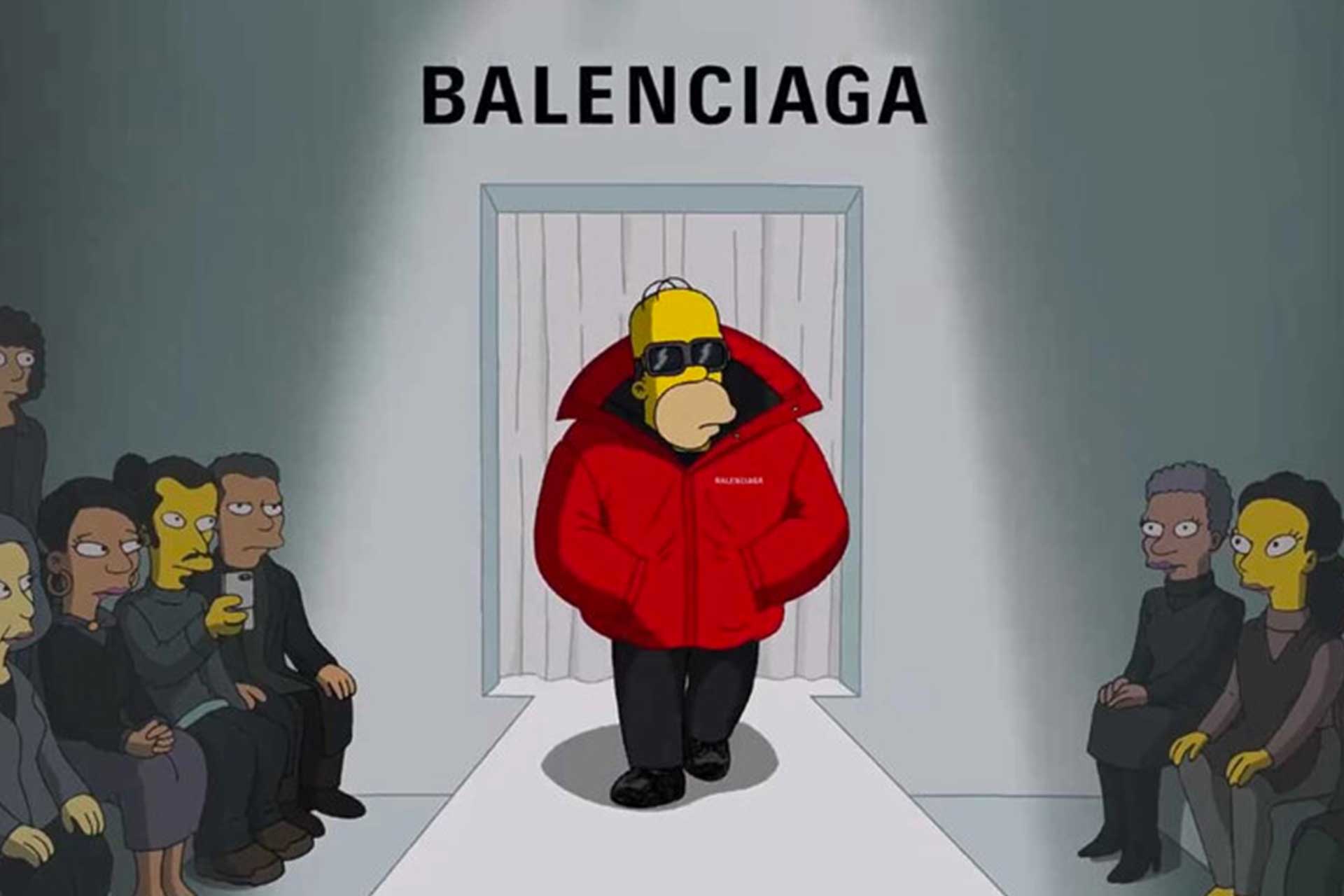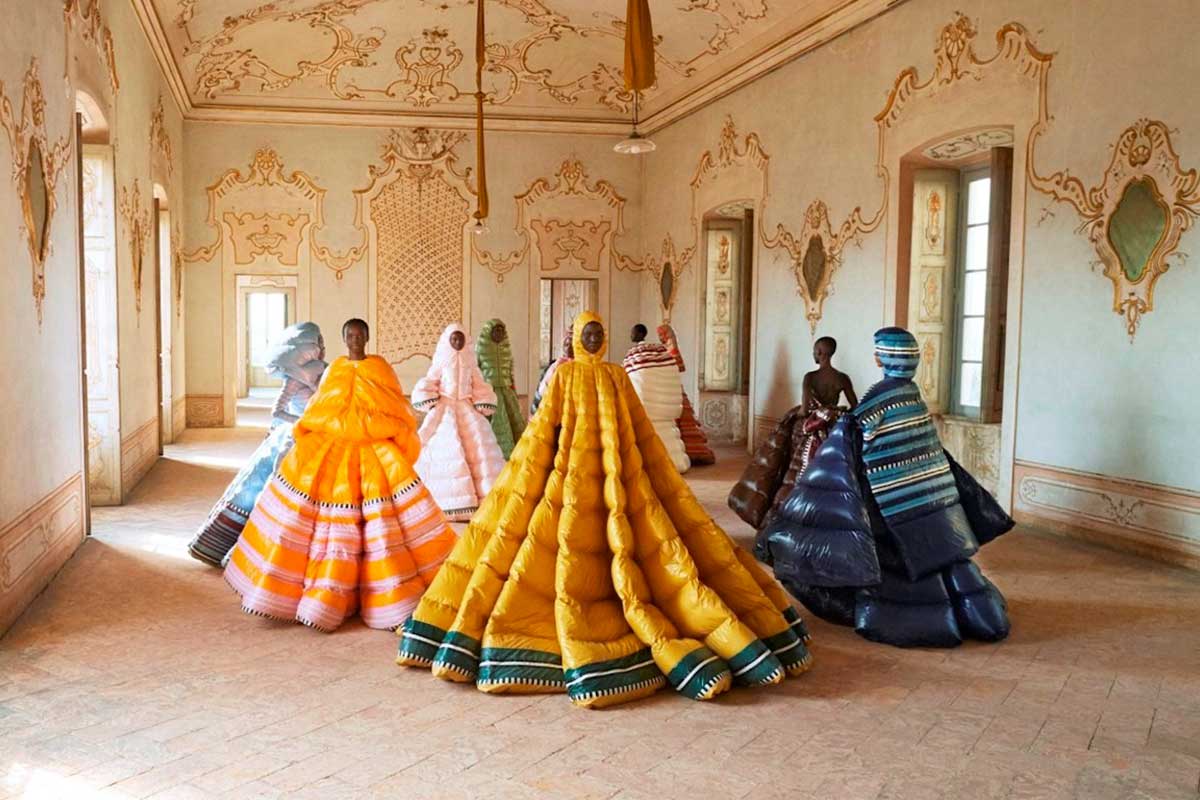«The brand who constantly collaborates, constantly renews itself» the future of fashion post collaboration, where the ordinary is no longer satisfactory
The adrenaline of the chase
Exclusivity is in the DNA of fashion collaborations, which usually live outside fashion’s rigid calendar. Whether it is Tiffany and Supreme or Yeezy and Gap, there is a reason they are always selling out; the small quantity of stock or the illusion of it. Inaccessibility is by no means a fault. An extension to ‘drop culture’, the technique employed by streetwear brands when releasing a limited amount of product to garner fanfare, sparsity implements an experience very foreign to the immediacy of consumerism today. Doug Stephens, futurist and business advisor for retail and consumerism, says «it is a response to the idea that we have lost a lot of the excitement and anticipation that used to exist in retail». Stephens explains the rush of buying a record he experienced in his youth when a limited quantity available meant queuing outside and the possibility of leaving the store empty-handed, «although it might have been a hardship for consumers at that time, it was also tremendously exciting».
In turn, shopping becomes a sport or hobby, and buyers must be aficionados. «It allows consumers to perceive themselves as collectors», branding executive, author, and doctor of sociology Ana Andjelic, says. «An Undercover and Cindy Sherman T-shirt it’s not a T-shirt, it’s a work of art. It’s not a commodity. It enforces brand identity and importantly infuses taste and meaning into everyday consumption. A person feels like they’re plugged in. They’re in the know. They’re not just consumers.
This is evident in the creative pairings between UGG and Telfer and Mulberry and the 2020 LVMH Prize Finalist, Priya Ahluwalia; one is a retail giant, the other an emerging talent. The age-old appeal of working with another brand is reaching new audiences. In the past, fast fashion conglomerates, namely H&M, made Versace affordable to the masses but also helped establish designers like Alexander Wang as household names. Today it’s much more about cultural credibility. «For Asian consumers, it is about owning something that is Prada, Chanel or Dior; it’s very much focused on brands that they know. For Western consumers, it’s much more about the brand that they’ve never heard of, the emerging, underground brand», Doug Stephens says.
Moncler previously allowed Pier Paolo Piccioli and Simone Rocha to reimagine their puffer jackets and coats but released their collection with refined cult Japanese brand Hyke earlier this year. The French outerwear brand has also launched countdowns for pending projects with namesakes JW Anderson and Craig Green, among others. Their reason for quick turnarounds is summed up by Andjelic: «The brand who constantly collaborates constantly renews itself».
The Constant Need for Content
«The drop is dead», says Andjelic, rather she introduces ‘the drip’; a constant stream of releases to satisfy the demanding and omnipresent internet generation – as millennials are currently the largest market for luxury fashion, and Generation Z the largest consumer of fashion collaborations according to Forbes. «It’s not a functional need because we don’t need another collaboration,” Dr. Ana Roncha co-author of Fashion Management: A Strategic Approach and MA Strategic Fashion Marketing course director at London College of Fashion insists, «It’s about driving content, driving novelty, driving innovation, and trying to come up with the one thing that hasn’t been done before».
«Internet culture is culture. What works well on social media – memes, references, and remixes – that’s how we consume fashion», Andjelic says referring to the new interest of shoppers. A hypothesis supported by collaborations between Gucci and Hot Wheels and Tiffany and Supreme, both have sold out.
The first of cross-house collaborations, the hyper postmodern Gucci and Balenciaga ‘hack’, revolved around the amalgamation of both brands’ emblems. It was paradoxical and unexpected. ‘Fendace’, Fendi and Versace’s joint effort, failed to receive the same response, despite being owned by competitive entities. The show did further cement the ‘collab’ as a trend and the use of logos as currency, putting an end to the puritanical notion of the solidarity fashion house.
Fendi soon after collaborated with business owner and personality Kim Kardashian and her billion-dollar shapewear brand Skims. Despite not selling out immediately, the line did pull in one million dollars in sales in its first minute. The pair’s biggest success wasn’t the shapewear, but the logo-less leather dresses at a higher price point, which was a clear demonstration of how unpredictable consumers can be.
«It must be authentic to the extent that consumers don’t feel that it is just a PR stunt», Roncha, says of the exceedingly more conscious buyers. Social media has reengineered how brands communicate with their audience: «The primary goal of marketing became creating and fostering a long-lasting relationship with your consumer. It went from transactional to a much more relationship-driven subject». Brands must constantly be in their customers’ feed to sustain their attention. «Prior to social media, all we knew about a brand was what they cared to share with us. We judged a lot of brands by their advertising because that was the most outward form of communication from a brand», Stephens adds, «but today, anything a brand does can be known and can come to light.»
«Whenever a brand does anything new, whether that’s pursuing a new design ethos, pursuing a new product category, or pursuing alliances with other brands, you run the risk of disenfranchising a certain segment of your consumer populace», Stephens remains certain however to survive in the new ever-evolving landscape when it comes to collaborations, «the benefits outweigh the potential pitfalls». Or in layman’s terms, “no press is bad press,” Andjelic reinforces this stating that brands must be perceived «not as economic players, but as cultural players».
Achieve Cultural Credibility
«It’s not just about swapping logos and creative directors, there must be more», Roncha says. «Fashion is now integrated with pop culture before fashion was something separate. Now the biggest fashion names are Rihanna, Kanye West, Virgil Abloh, who are not trained in craftsmanship, their talent is the cultural language. They’re unbelievably good at creating things that people are going to talk about», Andjelic says. Fenty, the Barbadian pop star Rihanna’s lingerie brand, debuts collections on Prime video making it accessible worldwide. Kanye’s strategy relies more heavily on controversy or the spectacle by hiring Balenciaga artistic director Demna Gvasalia to creatively direct his album listening party for example. «In a sense, they created this new language of culture, and fashion is part of that language», Andjellic says.
Reflecting on the symbiotic relationship between the music industry and fashion, Stephens addresses the artistic merit of two creative forces joining: «They often collaborate with other artists as a means of thinking differently about their music and gaining some influence from one another, but it also allows them to address different audiences». More specifically, hip-hop artists have been working symbiotically for decades. Aside from the creative aid, working together allows narratives to form outside of their work whether these be feuds or alliances, it increases fans’ engagement.
«There’s a recognition taking place now that at the end of the day, every brand really is an experience business,» Stephens says, «Brands are starting to key in on the idea they can’t just compete based on product because there’s just too much competition.» Roncha agrees fashion cannot exist in isolation, «Luxury has always been about culture, but for some decades, with the rise of e-commerce, luxury has become very commercial. Now, I do see they are regaining that position of leadership in art. It’s a position that I felt was lost in the democratization of luxury, they are regaining leadership through the art world once again».
Roncha sites Moncler’s ‘MONDOGENUIS’ that streamed in September as the pinnacle of this new camouflaged marketing. The presentation infused fashion with art, film, and music, accompanied by an art exhibition that was curated by executive director Luca Guadagnino. In the height of the pandemic, upcoming designers participated in Alessandro Michele’s Guccifest, a fashion film festival. While Balenciaga forwent the high-brow and debuted their Spring Summer 2022 collection in bright yellow splendor via a collaboration with the American cartoon The Simpsons. «They’re trying to find ways of combining content with commerce, so it’s not just about selling you something, but immersing you in the whole environment», Roncha says.
Once a gamble, fashion collaborations are now the industry’s favorite gimmick. But as the cultural language develops, they seem more a necessity than novelty. In a world so small, fashion can no longer exist in solidarity.
Dr. Ana Rochas
Working with established international fashion and lifestyle brands, start-up communities, academia, media and international organizations. She is an academic with close to two decades specializing in strategic fashion marketing and fashion brand development in a global setting.
Ana Andjelic
Ana Andjelic is a strategy executive who specializes in modern luxury brands. Author of “The Business of Aspiration” and one of Forbes’s ‘The World’s Most Influential CMOs’. Ana earned her doctorate in sociology and worked at the world’s top brands most recently, as the Chief Brand Officer at Banana Republic and advertising agencies. She is also a columnist, public speaker, and advisor, with a newsletter, The Sociology of Business.
Doug Stephens
Canadian futurist and keynote speaker. Founded consultancy the Retail Prophet, specialising in forecasting trends in consumer behaviour and retail. He is the author of The Retail Revival: Reimagining Business For The New Age of Consumeris. In 2017 Stephens authored his second book ‘Reengineering Retail: The Future of Selling in a Post-Digital World’.




















